I’ll never forget the agonizing days Facebook killed my engagement.
Not too long ago, I was riding high on the Facebook wave. I mean, who wasn't, right?
My community was growing, people were piling into the comments section of my posts, life was good.
I caught a mean left hook from Zuckerberg, and my community engagement flatlined in just a few days.
My community, once a thriving hub of conversation and connection, suddenly felt like a graveyard. My posts were getting buried and my members were dropping like flies.

What happened next wasted months more of my time.
I tried everything to bring the magic back – private messaging group members, starting small group chats, you name it. But it felt like I was trying to piece together a puzzle without the box.
I knew there had to be a better way. So I set out on a mission: find the perfect online community platform that could bring my people together, without a soul-crushing algorithm of doom.
But where could I build a community that not only avoided becoming a “ghost town” but also made members happy – no, thrilled – to pay me for access?
That's the million-dollar question, right? (Seriously, I paid good money for the answer.)
Before I let you know what I learned answering that question, here’s what I was looking for in an online community platform.
The following were non-negotiables:
- Connectivity and Engagement: Does the platform bring me and my members together to engage when and how we want? I needed support for various posts and media types, live videos, DMs, profiles, groups/spaces, and a mobile app for on-the-go connection.
- User Retention and Satisfaction: Does the platform keep my members involved in the community without confusing or overwhelming them? I was looking for well-implemented notifications (web, app, email), a smooth onboarding experience, events, and summaries to keep everyone in the loop.
- Scalability: Does the platform scale as my community grows? I wanted a solution that could handle a growing amount of content and members without becoming cluttered or overwhelming. Powerful permissioning and moderation tools, reasonable costs, an affiliate/ambassador system, and data import/export capabilities were a must.
- Focus on Community, Not Tech: Does the platform help me focus on my community and not the technology it's running on? I needed a platform that was hosted for me, easily extensible with plugins, integrated with other tools I use, and backed by a strong support andcreator community.
I’ll get right to it. After what felt like an eternity of trial and error…
I found that the best online community platforms for 99% of online communities are Mighty Networks, Circle, and Kajabi.

I chose Mighty Networks because it fit what I needed perfectly and had my community more engaged than ever – even though I had no network built in like on Facebook.
- Mighty Networks: Right for every community, big or small. This is the Swiss Army Knife of community platforms. Whether you’re just starting out or running a country, you are the captain of your community.
- Circle: Best for those who want customizability without any headache. This is the Lego set of community platforms. Customize everything from who can post where to smart digest notifications.
- Kajabi: Best for those wanting an all-in-one-course and community platform. This is the Instant Pot of community platforms. Build your courses, empower your community, host your website, and drive sales all with a single tool.
While Mighty Networks fit me, another one in the top three might fit your online community even better.
Having re-reviewed all of these in the beginning of 2024 with our own community members, my experience was that Mighty Networks has developed way faster than everyone else and is an even bigger market leader these days.
Here’s where each of these online community platforms shines.
Best Overall Community Platform: Mighty Networks
| Category | Mighty Networks |
|---|---|
| Best Overall Community Platform | Mighty Networks |
| Engagement | 5/5 |
| Retention | 5/5 |
| Scalability | 5/5 |
| Tech & Support | 5/5 |
| Pros |
|
| Cons |
|
Why Mighty Networks Stands Out Among Online Community Platforms
- Empowers your community: Instead of always coming to you, your community can help and support one another when you elect moderators and admins – an unlimited number of them.
- Makes monetization simple: Offer more access to you or your knowledge with the higher course and community tiers.
- Scales up effortlessly: Never worry about having to migrate platforms. Scale up to infinite spaces, members, and white-labeled experiences without getting cluttered or slamming you with hidden fees.
Price: Starting from $33/mo billed annually.
Mighty Networks is the best online community platform ever created. And it’s only getting better.
Many community platforms don’t scale. They either require a whole floor of employees to manage or get out of control once you pass 150 members (Dunbar’s number).
Like Bo Jackson mastered baseball and football, Mighty Networks mastered ease of use, tooling, and customization for both big and small communities.
Every plan includes unlimited members, spaces, hosts, and moderators so my community can grow organically. When I’m ready, I can upgrade all the way to having my own white-labeled app in the Apple and Android App Stores.
My community grew by 340% since I switched to Mighty Networks, and my subscription cost hasn’t changed by a penny.

But what about learning all the new tools?
Laugh all you want, but I had fun learning how to use the tool through their Creator Community. That community is actually on Mighty Networks, so I got a feel for the tools and user experience while I got up to speed.
You’d be shocked how much time and energy you spend clawing your eyes out over dull support pages. Mighty Networks has none of that.
Most engaging support I’ve ever used. Plus the team behind it is always in there listening to product feedback.
The community engagement tools on Mighty Networks are unbeatable.
You get Facebook-like features – news feeds, private and group chats, profiles and events – as well as online courses, multiple feeds on a page, paywalled spaces, and native livestreams (which I use for office hours and special course announcements).
And it connects to everything you need for your business, from ConvertKit to Stripe, through user-friendly Zapier apps.
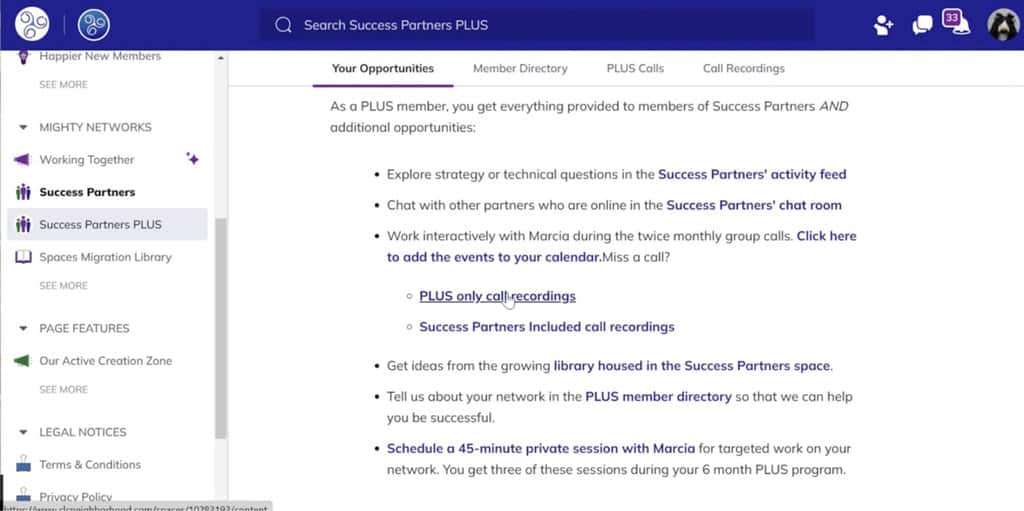
Mighty Networks is the right tool for anyone serious about building online communities. Doesn’t matter if your community is built around a course, coaching program, mastermind, YouTube channel, local bar, or your stuffed animal collection.
Every community host I’ve spoken with cannot get enough of this platform.
Start now and create a paid space at $10 a month. Get four people to upgrade, and you’re now getting the platform for free. That $33 out of your pocket is now $7 every month.
Everything is gravy after that.
Click here to start a 14-day free trial. No credit card required.
Best for Customization: Circle
- Engagement: 5/5
- Retention: 5/5
- Scalability: 5/5
- Tech & Support: 5/5
- Pros of Circle
- The cleanest interface of any community platform
- More configuration options than any other community platform
- Smart engagement tools like weekly digest emails
- Integrated spaces, events, courses, and live streams (+ recordings)
- Strong creator community
- Cons of Circle
- Costs scale up as you grow (more on this later)
- Purely a community tool (you’ll have to connect to other best-in-class tools)
Why Circle Stands Out Among Online Community Platforms
- Makes administration easy: Circle is the slickest community platform on the market. Somehow all the configuration options you have are super easy in the app.
- Keeps members engaged, not bothered: Circle focuses on engaging community members without overwhelming them, using customizable notifications and weekly digest emails that are auto-generated.
- Inspires you to level up your community: Circle has a rockstar user base that shares tool and community tips with all Circle community hosts on a Circle Community. Just like Mighty Networks.
Price: Starting from $39/mo billed annually.
I almost chose Circle over Mighty Networks for my community, and I get why big names like Pat Flynn and Brit Morin love it. Circle's interface is a love child of Slack and Facebook, with tooling that surpasses both.
In fact, Circle is FAR better than Slack and Facebook combined.
Circle’s fine-grained space and member permissioning (and paywalling), seamless events and live streaming, and multi-function spaces with forums and online courses are way out of Facebook and Slack’s league.
And everything is accessible via the web, iOS, and Android.

Circle might sound complicated, but the team managed to make it simple enough for a solopreneur to set up in a few days. All the options and fine-tuning sit tucked away if you’re not using them.
But none of those are the reason I almost went with Circle.
The real reason I almost went with Circle is because I saw a 255% increase in engagement with Circle over Facebook.
I thought migrating my community off Facebook would surely hurt my engagement, at least at the beginning.
But Circle has a trick up its sleeve: a personalized weekly digest email. This is the best digest email I’ve ever seen, from any product.
During my trial, those weekly emails drove more views than any DM begging I ever stooped to on Facebook. And I didn’t even have to turn it on… that digest email is enabled by default.
And that’s the tip of the iceberg on Circle’s automation.
Almost anything can be automated with a few clicks: welcome messages, permissions changes, reactivation notifications, and introductions to other community members.
Connecting to your marketing stack is a cinch too thanks to tons of Zapier apps.
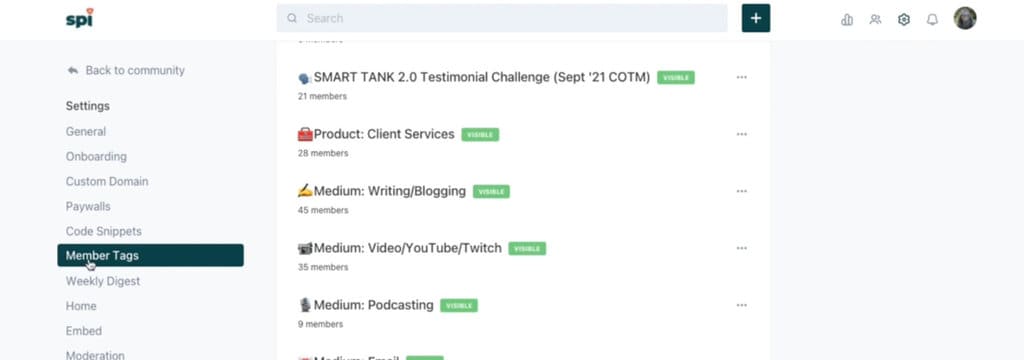
The common complaint I hear about Circle? Their pricing is too high.
The funny thing about these complaints? They come from non-serious entrepreneurs.
I’m talking about penny-pinchers who will waste days configuring “free” software instead of paying $20 to get that time back for more important things: like growing their community.
Yes, Circle is more expensive than your average community platform. But as the saying goes, “You get what you pay for.”
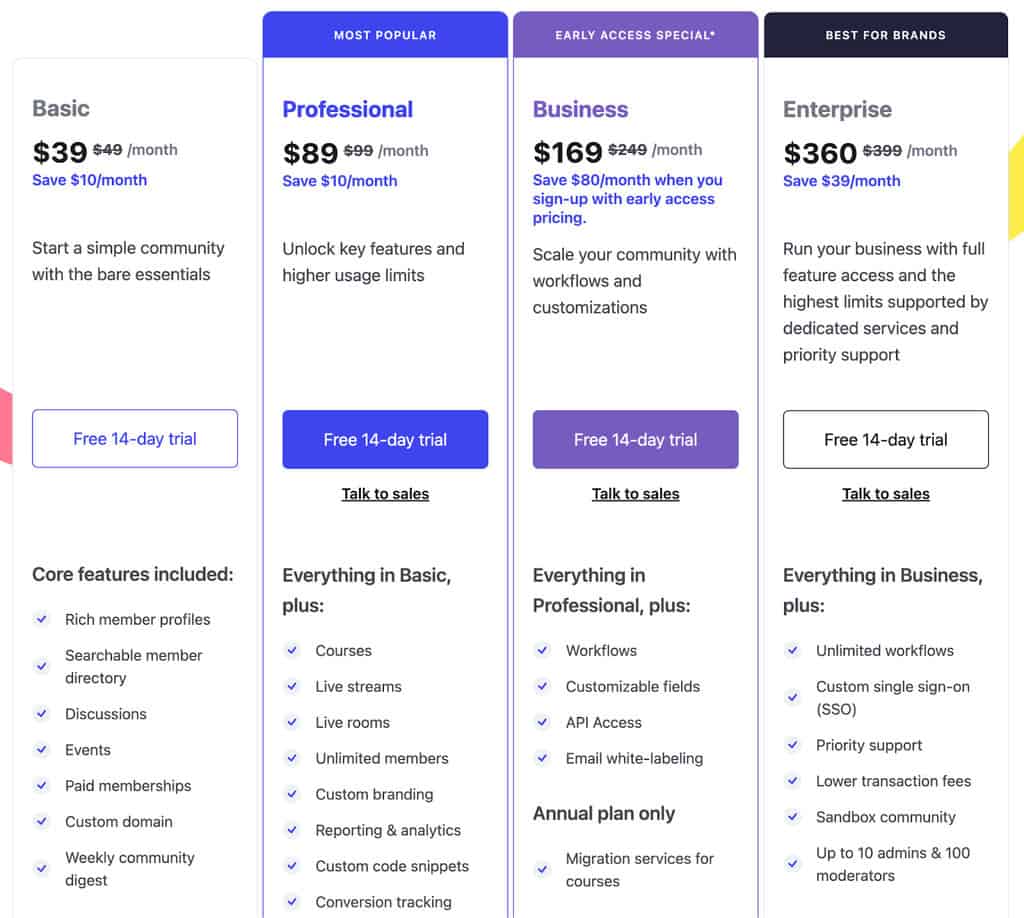
Consider this: Circle’s Professional plan is just $99 billed monthly with unlimited members, 3 admins, 10 moderators, and 20 spaces.
With all the possibilities unlocked via memberships, space paywalling, trials, discounts, and coupons; can you make $99 a month on Circle’s community platform?
You should be saying, “Karl, who do you think I am? With that, I can make $99,000 a month.”

That’s the kind of attitude we like to see around here.
But you don’t need that bravado to get started on Circle – the pricing starts near the cost of Mighty Networks.
Circle is one of the best online community platforms, and they’re gunning to be number one. Build a marketing system around it and you have a winning business.
Are you ready to see where you can take your community?
Start a free 14-day trial of Circle. Then join the Circle Community and never look back.
Best for Online Course Communities: Kajabi
- Engagement: 5/5
- Retention: 5/5
- Scalability: 5/5
- Tech & Support: 5/5
- Pros of Kajabi
- All-in-one tool for growing your course, community, membership site
- Easy to scale (no time and money wasted on fixing integrations)
- Thriving user community with coaching available
- My business grew 447% in 6 months on Kajabi
- Cons of Kajabi
- Expensive (until you consider what it replaces)
- You’re locked in (to a killer product)
Why Kajabi Stands Out Among Online Community Platforms
- Puts Time to Business to zero: Kajabi is more than a community platform; it’s funnels, drip campaigns, landing pages, online courses, and all that jazz. Your “Time to Business” just dropped dramatically (Yes, I did just coin that).
- Keeps your community challenged: Drive engagement in your community through Challenges that integrate right into your courses.
- Monetizes community and courses under one roof: Kajabi is an Olympic gymnast-level flexible. You can charge for courses, asset access, community levels, and more through one set of tools.
Price: Starting from $119/mo billed annually.
There is no question about it, if you want to stop messing with 15 different tools and start making more money now, Kajabi is your answer. Ignore the price. I’ll explain.
Kajabi ranks #1 in the best online community platforms for course creators and coaches that want one tool to do it all: create awareness, nurture leads, drive purchases, and grow a thriving community.
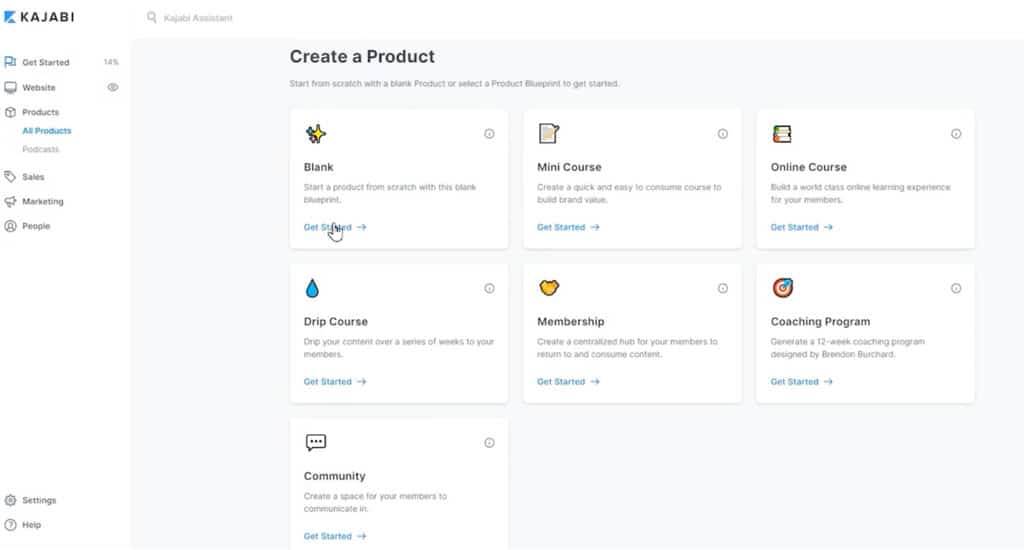
If you already have a tech stack you like working with, Kajabi will be overkill. If you don’t (or you use Teachable and hate your tech stack) just stop reading and sign up for Kajabi.
I grew my online course from $5,000 over 10 months with Teachable to $27,350 in 6 months with Kajabi.
That’s because I stopped messing with other tools and used Kajabi’s kick-ass website builder, funnels, drip campaigns, and online courses to cut out busywork and increase my earnings by… 447%?!?!

Kajabi is simple to use and an absolute bargain for what you get.
Kajabi starts at $119/month when billed annually, but you get a lot more than Mighty Networks and Circle. Mighty Networks and Circle are V12 engines; Kajabi is the whole Ferrari. Not so pricey after all.
Kajabi is on par with Mighty Networks and Circle with what it offers online communities: multiple spaces (“circles”) where community members can post, comment, and meet up over live video chats.
Mobile apps on iOS and Android are available too.
You can even paywall groups of circles through Access Groups and Offers, which makes Kajabi perfect for membership sites. Plus you won’t need to connect Kajabi to a website, email system, landing pages, online courses, or even podcasts – all of that lives in Kajabi.

Imagine if you could spend 99% of your time on being a better coach to your clients, or chatting with your community about their needs, or building more lessons for your community members.
That’s the Kajabi Advantage (Note to self: copyright that)
Stop wasting time debugging a Zapier connection that’s telling ConvertKit to send 50% off coupons to new full-price customers. Close your MailChimp account and never touch that dumpster fire again. Kajabi has you covered.
Start motivating your community by publicly tracking progress and challenge completions. Take them from the course material to events and back with integrated live video and recording libraries.
Kajabi is your go-to if you want to focus on the value your business delivers to customers, not the tools used to build it.
It’s for everyone from solopreneurs just starting out with a simple YouTube course to mastermind Chads with 1,000s of loyal followers, 100s of hours of course material, and multiple levels of memberships.

The only people Kajabi falls short for are those already on top of the world, commanding an army of tools to keep winning.
Kajabi puts all the tools to grow your business in your hands starting at just $119/month.
As I said in my full review, NOT using Kajabi is expensive.

None of those three are doing it for you?
If you’re a small business or solopreneur building a community around just about anything, I recommend you try all three above and find the one that fits you best.
They are the best online community platforms available today.
Doesn’t matter if you’re a community of furries sharing “in the wild” stories from around the world (use Circle) or a fitness coach turning mere mortals into gods (*cough* Kajabi) or a group of sleuths solving real-world mysteries together (did someone say Mighty Networks?), one of these platforms is for you.
There’s nothing more down below that’s worth considering. However…
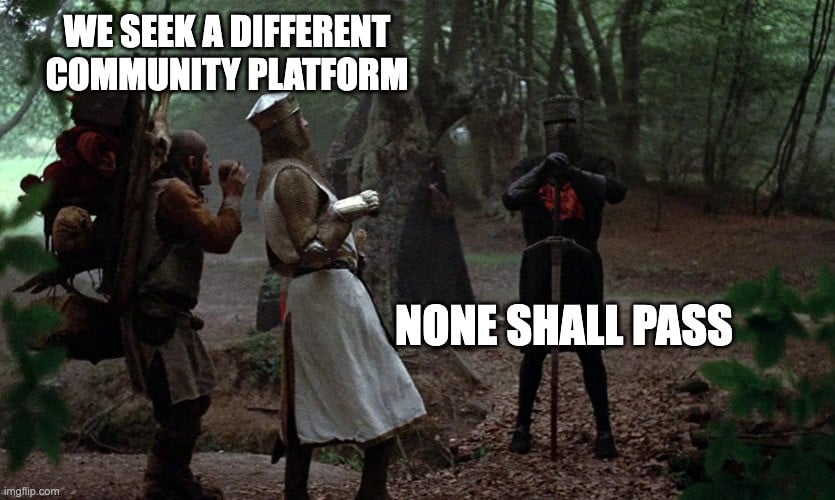
If you are:
- Deeply in love with (or trapped by) WordPress
- A big bad enterprise company looking to engage with fans
- A masochist with a fondness for the pain of self-hosting your community’s data
I may have another online community platform for you down below.
Runner Ups to Best Online Community Platforms
These platforms don’t have the firepower to stand up to the best online community platforms: Mighty Networks, Circle, and Kajabi. However, they have their uses and their rabid fans anyway.
So here we go.
Good for WordPress Addicts: BuddyBoss
- Engagement: 5/5
- Retention: 4/5
- Scalability: 4/5
- Tech & Support: 4/5
- Pros of BuddyBoss
- Most customizable community platform
- Drag and drop community sections anywhere (feeds, profiles, recent activity, etc.)
- Unlimited community members and admins at all pricing tiers
- Cons of BuddyBoss
- Weak permissioning and moderation tools
- No automation tools
- WordPress can be a mess
- Relies on other tools for courses (LearnDash, LifterLMS), video calls (Zoom), events calendar, and more that come baked in with other community tools.
Why BuddyBoss Stands Out Among Online Community Platforms
- Gives you creative freedom: Since BuddyBoss is a WordPress plugin, you can use other drag-and-drop page-building plugins like Gutenberg and Elementor to control every last pixel
- Integrates with WordPress ecosystem: BuddyBoss focuses on the social element, while other WordPress plugins can handle funnel, emails, landing pages and more.
- Connects your course and community: As long as your course is on LearnDash or LifterLMS, they can live under the BuddyBoss roof.
Price: Starting from $19/mo billed annually.
BuddyBoss stands apart from the best online community platforms because it needs to run on top of a WordPress site. If you already have all your systems – lead collection, email, CMS, funnels – built into a WordPress site using plugins, this might be a big advantage.
If you don’t, listen closely. Maybe you’re new to this game. Before you burn your 20s staring at a WordPress dashboard, you should know this: you will sink countless hours into making plugins play nice. I’ve been there, done that.
It didn’t just miss GoT for a year. I lost money – lots of it – because I made WordPress the foundation of my business.

So I consider it a dealbreaker that BuddyBoss is built on WordPress.
The upside of BuddyBoss is customization. You get the building blocks for online communities – profiles, friends, DMs, activity feeds, and rich posts – that you can run wild with.
Want to show completed courses on profiles? Forum in an article? Drag and done.
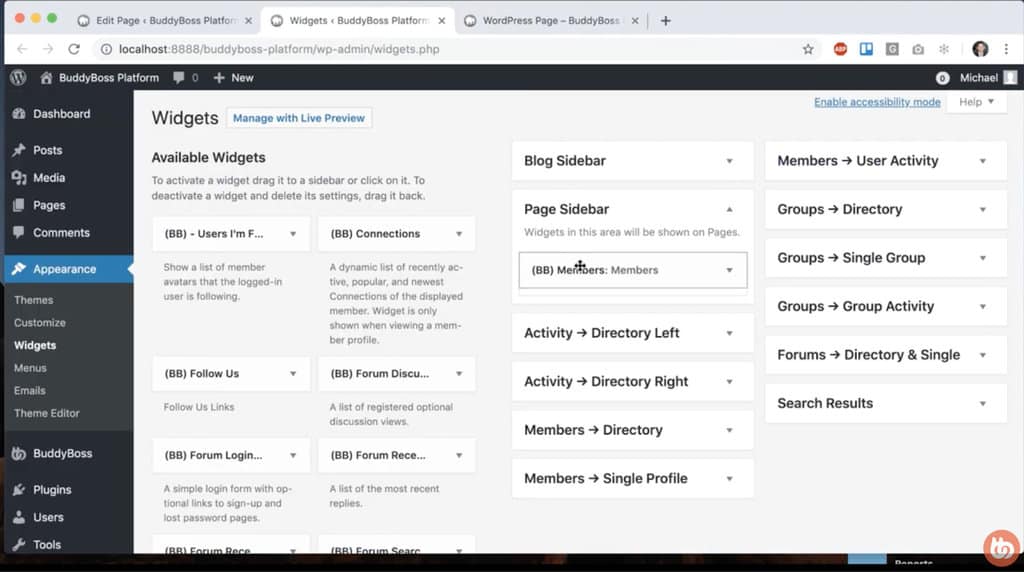
Personally, I prefer making money to dragging and dropping. For that, BuddyBoss gets in the way. Give me Kajabi, where I can pick from three templates that I know are winning big for thousands of successful course creators.
Then I can get back to GoT or the gym AND make more money.
Buddyboss does offer 24/7 tech support, probably because their customers would quit trying otherwise.
If you’re married to WordPress and obsess over customization, you can try BuddyBoss here. There’s no free trial, but they do offer a 21-day risk-free refund policy.
Good for Testimonials: StoryPrompt
- Engagement: 3/5
- Retention: 3/5
- Scalability: 4/5
- Tech & Support: 4/5
- Pros of StoryPrompt
- Native video messages are front and center
- Auto-transcription of videos (without limits)
- StoryPrompt community for learning how to use StoryPrompt
- Easy editing and sharing tools for videos
- Cons of StoryPrompt
- Not built around courses or coaching
- Not optimized for written posts
Why StoryPrompt Stands Out Among Online Community Platforms
- Gathers video testimonials: Using native video throughout the platform, you can easily gather rich testimonials from enthusiastic customers.
- Builds deeper connections to your brand: Sharing videos back and forth will get your customers feeling like a part of your brand, not just dollar signs.
- Seamlessly edit and publish video: No production studio needed, you can chop up videos on the platform and publish them right to your website immediately.
Price: Starting from free (videos expire in 14 days) then $39/mo or more billed annually.
Built entirely around the asynchronous video (record and post), StoryPrompt has its niche. However, it’s just not for most entrepreneurs and businesses.
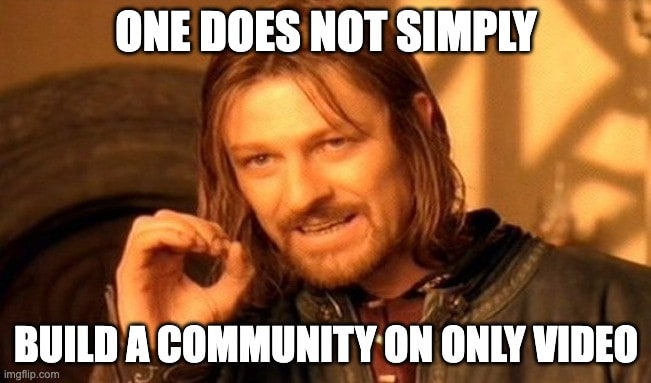
Where StoryPrompt wins is its ability to collect short videos from a team or customers. This can be super useful for customer testimonials, a “Wall of Love”, and product reviews.
You can even prompt your customers with multiple questions while they’re recording to get all the sound bites you need. Then you can trim, add music, and pop in a b-roll before embedding an HTML snippet to your website.
That’s a nice workflow for a big brand wanting customers to sell for them. For community organizers, the lack of profiles, moderators, rich notifications, integrations with other tools, and forum-style text conversations limits StoryPrompt’s usefulness.
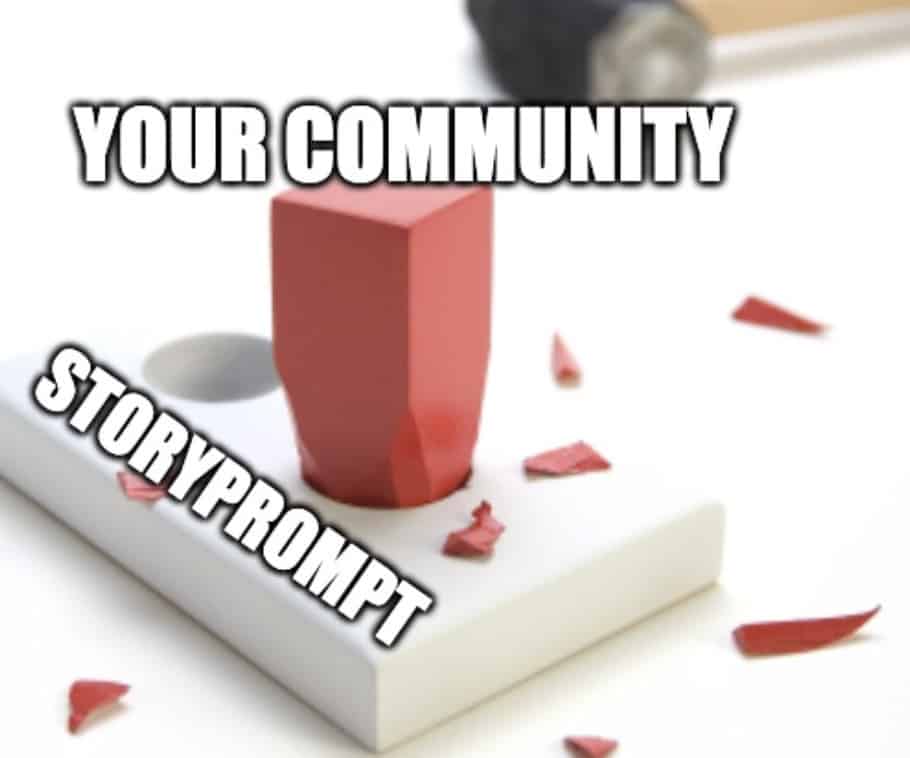
Founded in 2022, StoryPrompt is fairly new to the community space. I’ll keep an eye on them.
If you love the idea of always using video within your community, take a look at StoryPrompt. Sign up for free to play around, though videos will disappear after 14 days until you upgrade.
Good for Enterprises: Bettermode
- Engagement: 3/5
- Retention: 3/5
- Scalability: 5/5
- Tech & Support: 4/5
- Pros of Bettermode
- A plug-and-play community platform for customer forums
- Rich Help Center with articles, videos, events, roadmap, and customer wishlists
- Integrates with enterprise apps like Hotjar, Intercom, and Slack via SSO, and offers an API with webhooks for others
- Fully white-labeled
- Cons of Bettermode
- Forum, not a social network
- You don’t own your data on Bettermode
Why Bettermode Stands Out Among Online Community Platforms
- Collects user-generated content: Stop tweeting back and forth or surfing Instagram for great customer stories about your product – collect them from your most avid fans on a Bettermode discussion board.
- Puts customer relationships in one tool: Want your customers to do support for you, and write your roadmap, and learn from other customers? Bettermode is your ON switch.
- Takes all the development out of customer engagement: Instead of stitching together tools like Hubspot, Freshdesk, and forum software, just use Bettermode for all of it. They handle all the backend for you so you can focus on customers.
Price: Starting from $599/mo billed annually.
Bettermode is definitely for large enterprises only. The price already scared off most entrepreneurs, and the feature set doesn’t cut it for their needs.
If you’re still here, I’m guessing you work for a big company. If so, hear me out.
Enterprise software causes headaches all around. CTOs sign checks based on feature lists, leaving confused teams to sort through horrible UIs and call support that’s always “out to lunch”.

Bettermode rebranded from ‘Tribe’ to emphasize its mission to be an on-button for customer relationships.
Friends of mine that use Bettermode say the UI is as slick as Circle, and the platform requires minimal setup – a first in enterprise software.
On day one you can push out a help center, video resources, discussion board, and public roadmap for your customers to participate in.
Today's customers crave engagement with brands. They want to know someone over there is listening.
But you can’t do that with a tech stack stuck in the 90s. You can with Bettermode.
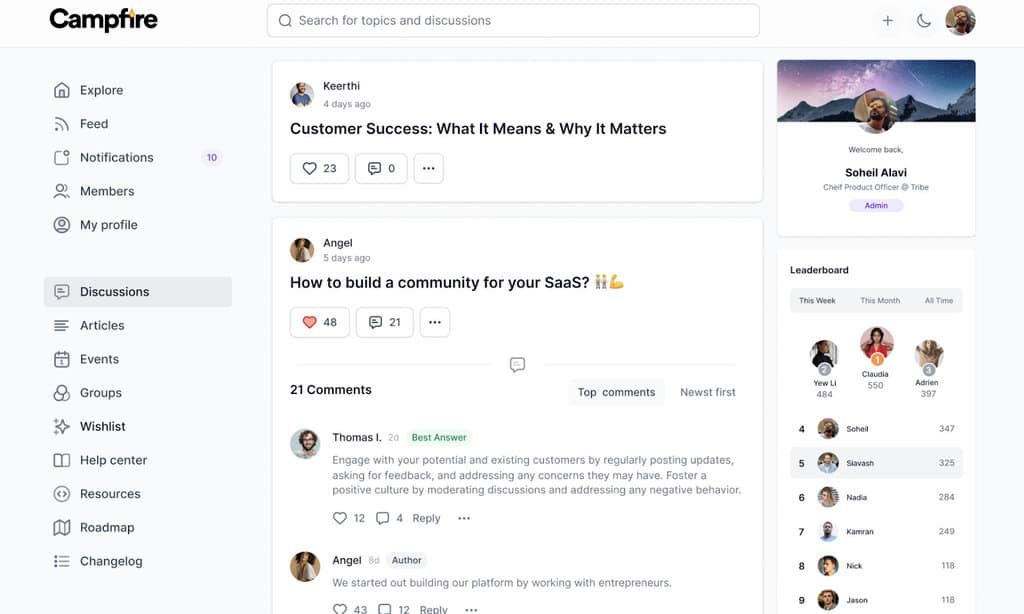
Bettermode is your reboot, without sacrificing any enterprise-level needs: API, staging environment, SSO, white-labeling, audit log, security, and an uptime SLA. You get them all with Bettermode.
Make your customers fall in love with you. Get a demo of Bettermode.
Good Enterprise Backup Option: Higher Logic Vanilla
- Engagement: 2/5
- Retention: 2/5
- Scalability: 4/5
- Tech & Support: 3/5
- Pros of Higher Logic Vanilla
- Its name makes you want ice cream? That’s about all…
- Cons of Higher Logic Vanilla
- Worse than Bettermode in all ways
Why Higher Logic Vanilla Stands Out Among Online Community Platforms
Replaces Bettermode if you get in a fight with their salespeople: Seriously, it’s basically the same product as Bettermode with fewer features and polish.
Price: Starting from TALK TO SALES (so they can charge based on what you can pay).
I’ll get straight to the point. Higher Logic Vanilla raises two big red flags for me.

First, it’s an acquisition of Vanilla Forums by Higher Logic, an enterprise software company that seems to specialize in writing buzzword-laden press releases. I’ve seen a few enterprise tool acquisitions from the inside; they are nothing short of ugly.
Second, Higher Logic Vanilla’s website is short on details. To me, that’s a sign the product is far behind competitors (Bettermode). So they resort to booking a phone call, where a sleazy salesman can squeeze you to make a deal before you’ve seen the product.
Higher Logic Vanilla is an overpriced forum board. Just use Bettermode.
Good for Professional Networks: Hivebrite
- Engagement: 3/5
- Retention: 3/5
- Scalability: 3/5
- Tech & Support: 3/5
- Pros of Hivebrite
- Easy to blast out updates to a large community
- Integrated event management and ticketing
- Member directory and job board built-in
- Cons of Hivebrite
- Not a place to ‘hang out‘
- No course features
- Only a few integrations with big enterprise tools (Salesforce, Microsoft Dynamics)
Why Hivebrite Stands Out Among Online Community Platforms
- Manage events for a professional organization, alumni club, or non-profit: If you’re tired of bcc’ing every update, Hivebrite is a community platform for engaging with a loosely-affiliated group.
- Help affiliated people find each other: Simple directory and job board on Hivebrite can help bring your members closer together. They’ll appreciate it.
Price: Request a demo to learn more about pricing.
Hivebrite is for nonprofits and organizations: think the University of Amsterdam and the American Heart Association.
Members don’t need chat or progress updates (keep that on LinkedIn), they need to share job opportunities and hear about events. That’s what Hivebrite powers.

Hivebrite probably saves every organization that signs up $100k that would have gone to a web dev firm for a copy-pasted Facebook v1 clone.
Community members on Hivebrite find and connect with each other through search, chat, rich profiles, and networking tools.
Admins can set permissions and message specific groups about content and events via email. Run events through the platform as well, with multiple ticket types and payments built in.
Hivebrite nails the needs of nonprofit and professional networks that want to bring their community closer. Request a demo now.
Good for Self-Hosting: Discourse and Flarum
- Engagement: 2/5
- Retention: 2/5
- Scalability: 2/5
- Tech & Support: 3/5
- Pros of Self-Hosted
- You own the data – nobody can shut you down.
- Cons of Self-Hosted
- Do all your own tech support
Price: Free if self-hosted, then from $25/month.
Self-hosted solutions like Discourse and Flarum serve a very specific need: full ownership of data. Most entrepreneurs and enterprises don’t need this, and would gladly pay a little more to have someone else deal with uptime.

For the very few that do need full ownership over the data in their community, your choices are limited. With both Flarum and Discourse, you get a basic forum, not a community platform.
There are no rich profiles, no live streams, no smart digests, no challenges and courses.
If you’re lucky, you get expanded links, media uploads, and real-time chat (like on Discourse). You get basic moderation, Reddit-style, where mods can flag and hide posts.
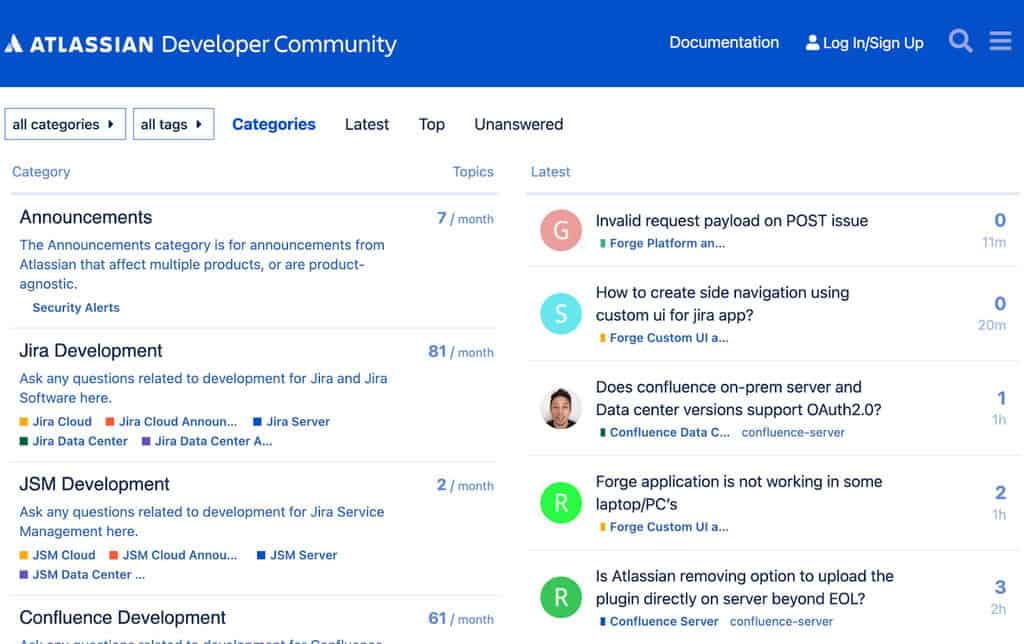
Plugins are far and few between, meaning you or a developer you hire will have to implement everything you want from scratch.
I’ll pass. But if this sounds right up your alley, knock yourself out: sign up for Discourse or Flarum.
Good for Courses: Thinkific
- Engagement: 3/5
- Retention: 3/5
- Scalability: 4/5
- Tech & Support: 4/5
- Pros of Thinkific
- Rich course creation tools with tests, assignments, cohorts and self-paced
- Integrated website builder for marketing your course
- Free to start
- Cons of Thinkific
- No marketing infrastructure around your course (unlike Kajabi)
- Limited community features
Price: Free test drive, then starting from $36/mo billed annually.
Thinkific isn’t really a community tool, but since they’ve launched community features I felt compelled to include them while researching for my own community.
Here’s the bottom line: Thinkific is a great course builder if all you need is a course builder. That means every other marketing tool you’re using could sell ice to an Eskimo.
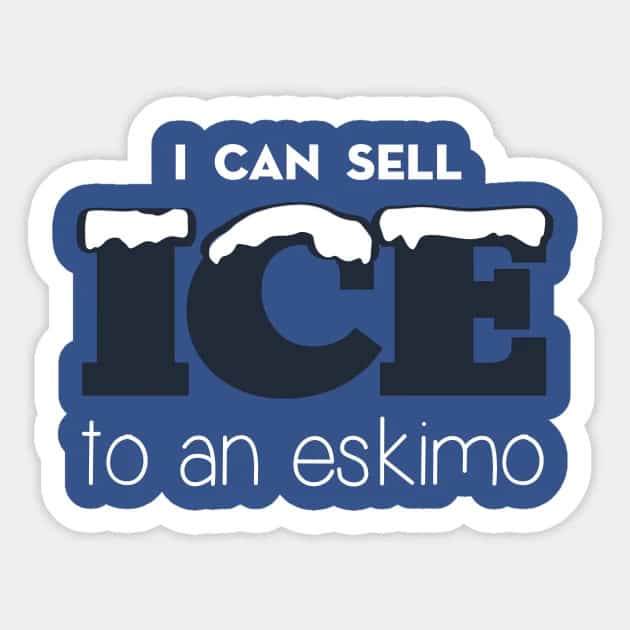
But until you have a killer stack, you’re better off with Kajabi, Circle, or Mighty Networks. Thinkific’s community tools are behind the times. Think basic content feed and notifications. No automation or permissioning.
If you love Thinkific, here’s what you should do: add Circle or Mighty Networks for the community. Both will integrate seamlessly and give you far richer community features than Thinkific.
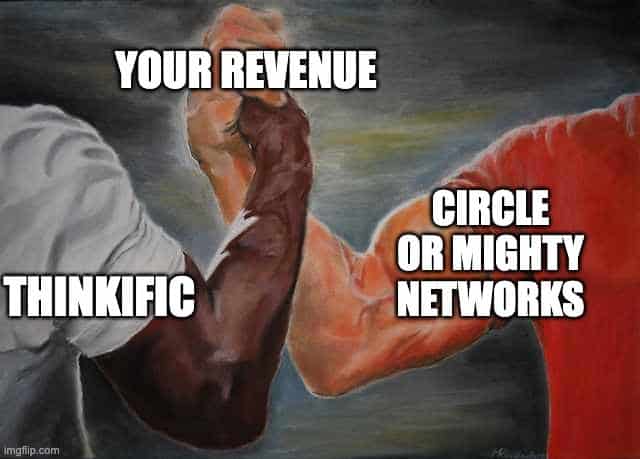
If you haven’t put a ring on Thinkific yet, consider Kajabi. What you lose in a few small features like revenuing sharing with contributors, you make up for in centralizing all your tools. That ease of use and peace of mind is worth millions.
Good for Non-Serious Creators: Podia
- Engagement: 3/5
- Retention: 3/5
- Scalability: 2/5
- Tech & Support: 4/5
- Pros of Podia
- It’s cheap… but you get what you pay for
- Cons of Podia
- Fewer features than Kajabi communities
- No mobile apps or custom designs possible
- Highway robbery ‘free’ tier with 8% transaction fees
Price: Free with an 8% transaction fee, or from $33/mo billed annually.
There’s not much to see with Podia.
Sure, Podia is cheap. There’s a free tier!

Podia is for non-serious entrepreneurs only. Otherwise, the tools fall short and the pricing is whack. You get courses, paywalls, and a forum board. Profiles, directory, messaging, moderators – forget it.
You might save $10 a month, but you are losing precious time and hair instead. You will need to migrate off it once you see substantial community engagement.
Stay away and thank me later. Choose another option above.
Good for Hobbies: Facebook, Slack, and Discord
- Engagement: 2/5
- Retention: 2/5
- Scalability: 2/5
- Tech & Support: 1/5
- Pros of a Free Community Platform
- None. I’m not saying “they’re free!” here. The time you waste on these is worth far more than any platform above.
- Cons of Free Community Platform
- Simple tools and feeds
- Overwhelming notifications, easy to get distracted
- Algorithm risk on Facebook
Facebook is for updating your grandma, Slack is for soulless startups that think emojis equal morale boost, and Discord is for gaming with your internet friends.
These community platforms are for hobbies, not serious businesses. Facebook can cut you down without warning, and all of them are unmanageable past a small scale.

Your community is liable to drown in notifications and scatter elsewhere on any of these platforms.
For your pickleball team, sure, a Facebook group is fine. For after-work drinks with your colleagues, create a Slack channel. For your Call of Duty coordination, Discord fits the bill.
But these are all places your business goes to die.

For all the hard work you’ve put into your business, don’t kill it here. Go with Mighty Networks, Circle, or Kajabi and create some real value we can all be proud of.
Closing Thoughts
For entrepreneurs and small businesses offering online courses, coaching, masterminds, or membership sites: the right tool for hosting your online community is either Mighty Networks, Circle, or Kajabi.
These are the gold standard.
Other online community software for…
- Enterprise businesses: check out Bettermode and StoryPrompt.
- Professional networks and non-profits: Hivebrite.
- Need to self-host: Discourse or Flarum
Okay, if you made it this far, this might be you:

You can’t please everyone. Maybe you’re close to going with a solution on this list or you have another one in mind.
I’ve tried and used hundreds if not thousands of business software apps. My first memory is downloading Microsoft Dreamweaver, and my last memory will probably be waiting for my VR beach to load over pitiful hospital wifi.
Here’s what I did before I bought Mighty Networks. I recommend you follow these steps as well.
Judging a Community Platform Before You Buy
Nobody likes a nasty surprise right after your credit card gets hit with a fat charge.
You log in and find out that “rich email editor” means big, normal, and small size font with – can you believe – bold and italic!
Thankfully there are ways to avoid this. I learned them the hard way so you don’t have to.

Just Take the Trial
Most community platforms offer 14-day trials. But a community platform isn’t a car; you can’t stamp on the gas and experience it all in one day. Your community needs to come in and knock around.
Try exploring the platform's own community to see how your community members might experience it: Mighty Networks, Circle, and StoryPrompt.
Look at their Help Resources
Landing pages are deceiving, so visit the platform's Help Center or Resources section for an accurate picture of its capabilities. These are built for real users, so they can’t lie about features.
Dream about your community’s growth
No, I didn’t just hit the bong – this is serious business.
You might just be a couple of dudes sharing memes today, but what could your community become? In a year you could be hosting weekly seminars for your fellow meme lords, hosting your recordings for thousands of devout followers.
You’ll want a community platform that can support you as you grow.
Check their Press Releases
Community platforms are often acquired and bolted to other services. If the acquisition doesn’t go well, the platforms won’t work well together.
Google the product name plus “acquired” to find the full story. Many acquisitions go sour, but others overcome the difficulties: like Kajabi’s successful acquisition of Vibely.
Best Online Community Platforms F.A.Q.s
What is an online community platform?
An online community platform enables like-minded people who share a common interest or desire to come together to discuss related topics, learn from each other, and support progress. The platform makes it simple and enjoyable to engage with others, keeps members retained through smart notifications and reminders, and enables connections through various mediums: text, voice, and even live video.
What is the best online community platform for WordPress?
The best online community platform for WordPress is BuddyBoss. You get all the customization of WordPress with lots of built-in social and community features. Plus, they throw in stellar 24/7 tech support.
Unfortunately, building on WordPress means a lot of tech management and likely a healthy dose of plugin clashing. That’s why I don’t recommend running your community on WordPress – just get a dedicated community platform so you can focus on what you do best: growing your community.
Are online community platforms public or private?
Whether your online community is public or private is up to you! The beauty of a good online community platform is that they give you the choice – down to spaces and topics – of who can see what. Have an open forum to let people see what you’re all about, then paywalls into higher and higher levels of access to content and discussion. Mighty Networks, Circle, and Kajabi all enable this.
How do I start an online community?
The secret sauce to starting an online community is finding what brings your community together. You're looking for a specific type of person with a certain interest and shared pain points. Unlike other kinds of businesses, you’re not going for broad appeal: you want your community members to feel like they can’t find the discussions and resources being shared anywhere else. That will drive engagement (and ultimately revenue) like you’ve never seen.




